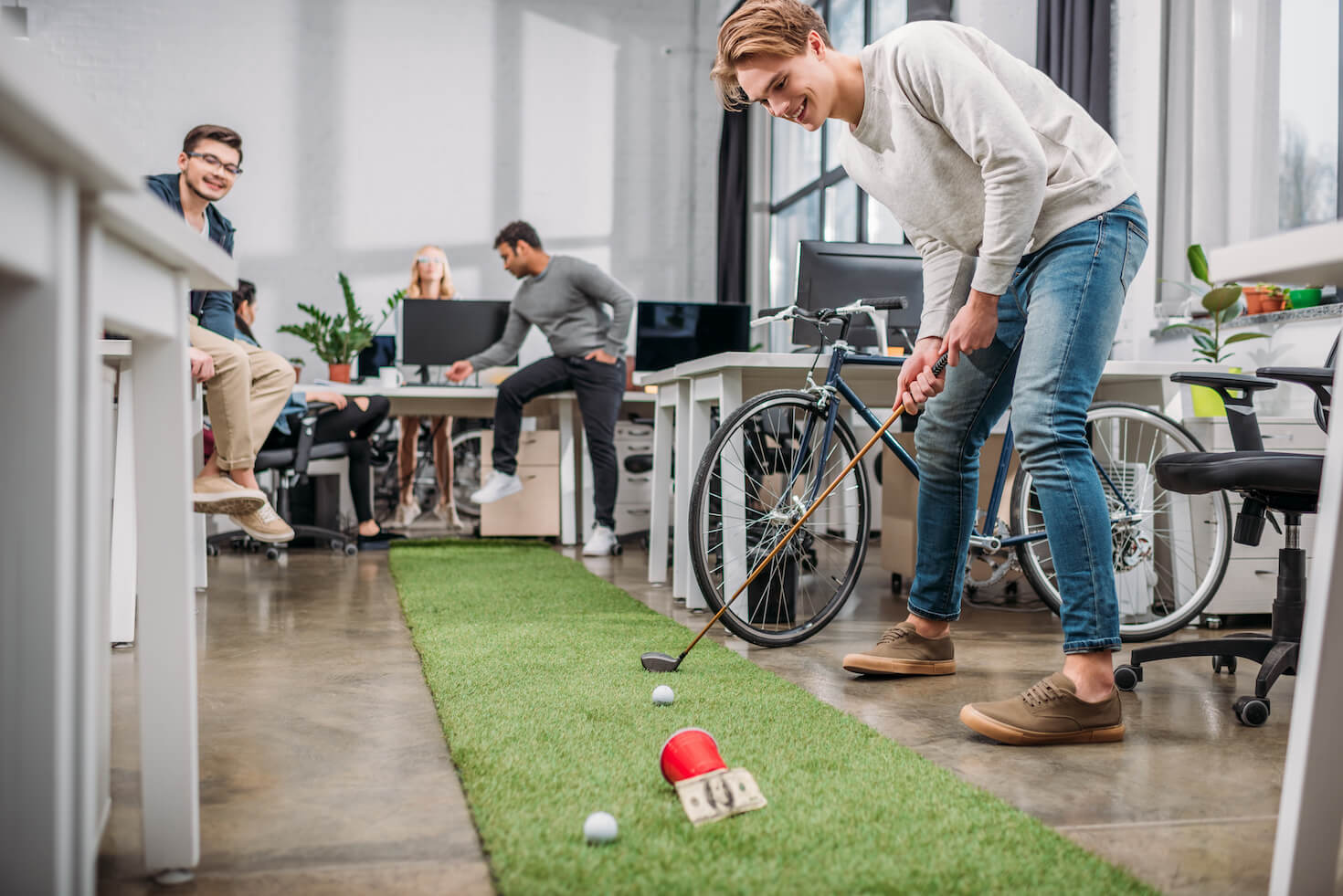How the pandemic has transformed the office and how to create a destination workplace
The pandemic has accelerated us into the Future of Work years ahead of time. As everyone launched into the hybrid world; It was proven we can now be efficient working anywhere, not just within the constraints of an office between 9-5. This rapid change in how we work has had an impact on what is now required from a workplace and has left companies wondering how to handle the return to work.
We already knew workplaces needed to be more than just desks lined up in rows with some meeting rooms and amenities. This is what sparked leading companies to inject a range of fun gimmicks and perks to differentiate themselves, become a destination workplace and entice new talent. This included sleeping pods, bean bags, grass floors, disco tunnels, fireman’s poles, beer taps, mini golf courses and ping pong tables. You may have also seen images of brightly coloured slides at Google HQ or Red Bull’s breakout rooms with game consoles and enviously wished your workspace had something equally playful.
However, not all that looks exciting on the surface is functional to our workplaces nor does it drive engagement, particularly once the novelty wears off. Just as we transitioned from the traditional cubical office layout toward an open plan style with infusions of ‘Fun’; businesses are needing to evolve again to handle new workplace sensibilities changed by the pandemic.
The hybrid world has changed the role of the office, as employees endeavour to achieve collaborative work and hybrid meetings when amongst their colleagues whilst saving focussed work for home. Organisations now need to consider how they can best design an engaging and purpose-filled workplace that both encourages employees into the office and attracts new talent looking to work in a stimulating environment. It is crucial for modern workplaces to strike the balance between innovation and relevance, questioning the purpose behind each design choice.
Office design that aligns with a company’s values and functionality, while driving employee well-being and comfort, will ultimately come out on top in the future workplace. This has required many companies to re-evaluate their space, prioritising innovation and purpose like never before.
So, what exactly does the new destination workplace look like and what do businesses need to do to create a space that employees want to come to?
Below is a guide of what should be at the forefront of all design decisions:
Destination workplaces are derived from purpose-driven design
A well-designed and appealing workspace will attract employees into the office by creating an environment that provides connection, inspiration, and offering something more than they can get from home.
Soundproofed meeting rooms and a designated mix of collaborative and focussed work areas which are flexible and unique are examples of purposeful functionality. Aligning with the company brand by integrating the values and cultural norms of a business into the design creates a space that aligns and embraces the purpose of that specific business. Additionally, incorporating everyday materials, like timber, concrete and glass, along with planting, greenery and organic forms are purposeful to help reduce stress levels and have a positive impact on the well-being of the employees.
Intelligent office design is about ensuring each design feature has a purpose beyond just aesthetics.
The future office requires intentional design
Companies who really want to discern the new needs of the office should consult with their employees around what is important to them and what they desire in the office. Consultation provides insight into understanding the experience that people are seeking from the workplace. It is also an important way to make intentional design decisions, in lieu of decisions based on aesthetic or what others may be doing. Creating a compelling workplace experience will ensure that the workplace attracts and retains talent, and is both engaging and highly functional.
The future workplace needs to support both collaborative and focussed activities, along with the critical driver of social connection that many people missed during times of lockdown and isolation. Additionally, a workplace will have a mix of neurotypical people and neurodivergent thinkers – and these considerations are becoming more prevalent in office design. Designing for a range of workstyles and thinking is critical to any modern workplace, and should be a carefully considered part of the design process.
As we move forward into a world of work that is purpose driven and fulfilling, the spaces we inhabit need to also align, going beyond gimmick and aesthetic to be both intentional and inspiring.
At Future X Collective we’ve always believed that people are the product of their environment … it has been our experience for more than 20 years of strategizing and designing workplaces that the better environment you create for people – then the better their experience of work is, and in turn the happier and healthier they are.
Future X Collective works with clients to drive new workplace strategies – click here for information on how we help you transform your office to a destination workplace.



